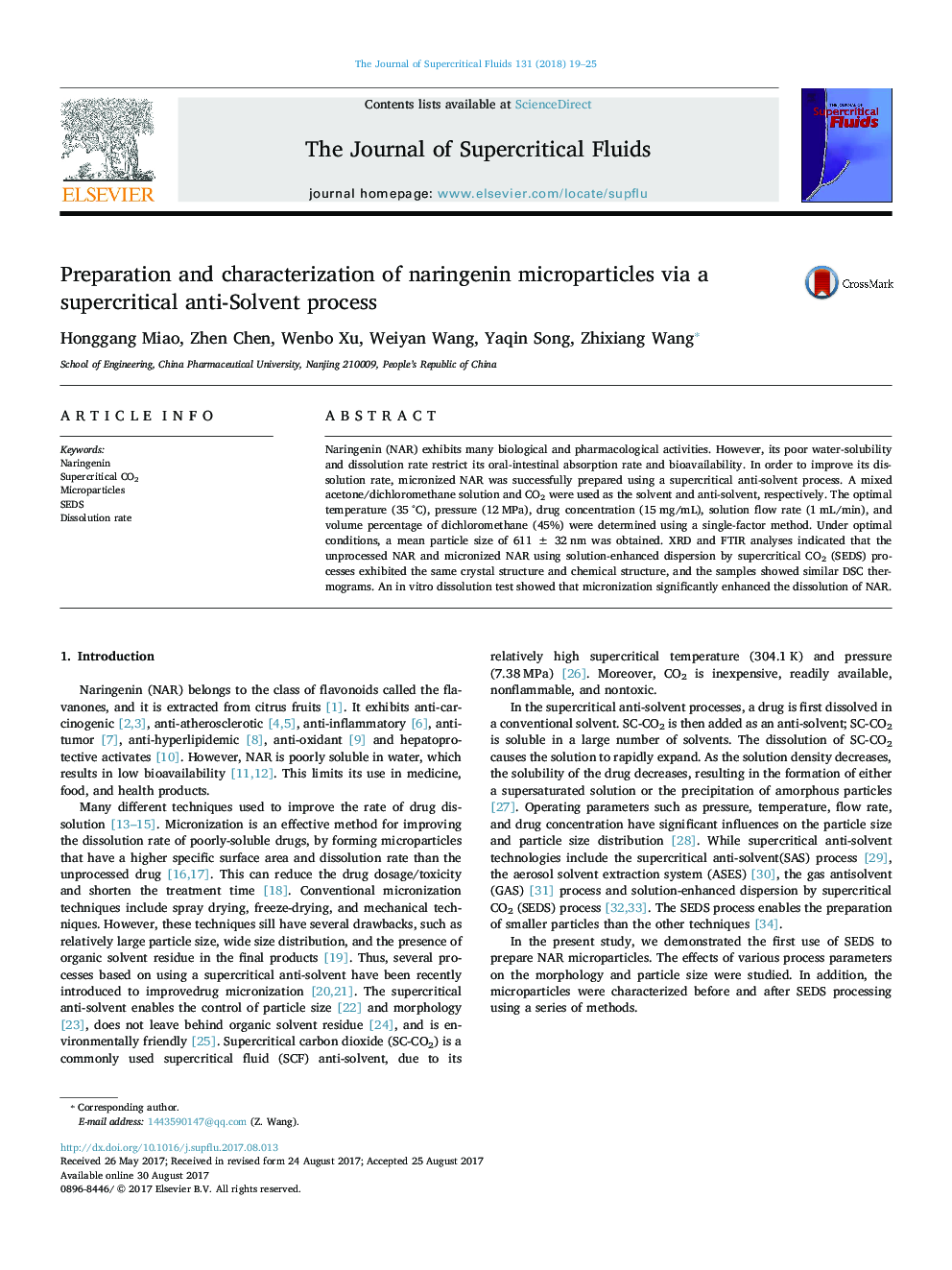| کد مقاله | کد نشریه | سال انتشار | مقاله انگلیسی | نسخه تمام متن |
|---|---|---|---|---|
| 4914582 | 1427345 | 2018 | 7 صفحه PDF | دانلود رایگان |
- NAR microparticles were prepared by SEDS with a mixed solvent of acetone and DCM.
- Chemical or crystal structures of NAR did not change during SEDS processing.
- NAR particles changed to small flakes with smooth surfaces during SEDS processing.
- Micronized NAR microparticles have higher dissolution rate than raw NAR.
Naringenin (NAR) exhibits many biological and pharmacological activities. However, its poor water-solubility and dissolution rate restrict its oral-intestinal absorption rate and bioavailability. In order to improve its dissolution rate, micronized NAR was successfully prepared using a supercritical anti-solvent process. A mixed acetone/dichloromethane solution and CO2 were used as the solvent and anti-solvent, respectively. The optimal temperature (35 °C), pressure (12 MPa), drug concentration (15 mg/mL), solution flow rate (1 mL/min), and volume percentage of dichloromethane (45%) were determined using a single-factor method. Under optimal conditions, a mean particle size of 611 ± 32 nm was obtained. XRD and FTIR analyses indicated that the unprocessed NAR and micronized NAR using solution-enhanced dispersion by supercritical CO2 (SEDS) processes exhibited the same crystal structure and chemical structure, and the samples showed similar DSC thermograms. An in vitro dissolution test showed that micronization significantly enhanced the dissolution of NAR.
91
Journal: The Journal of Supercritical Fluids - Volume 131, January 2018, Pages 19-25
